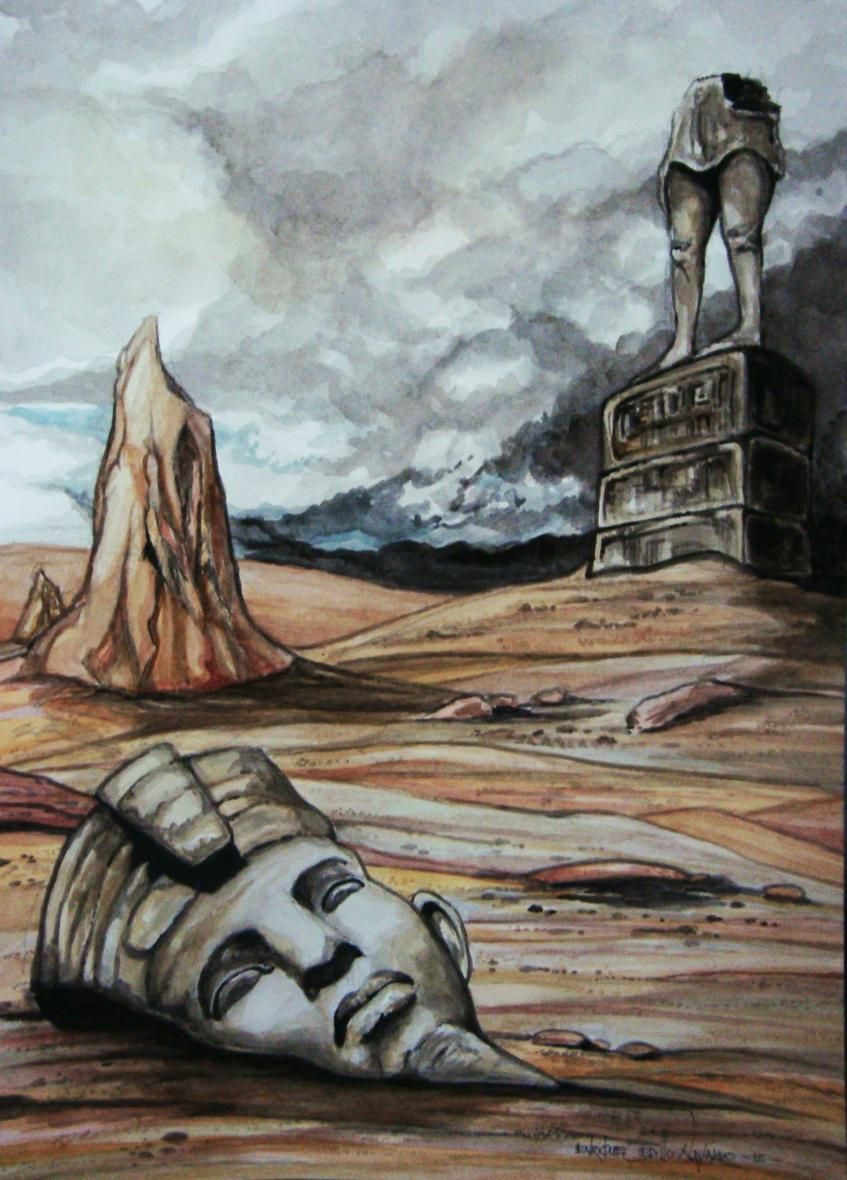

Unlike statues, memories in poems or sonnets will live during the passing of time because these poems could easily be passed to other people thus even making the memory grow rather than just continuing it. The irony in this poem is that Ozymandias, a king who probably lived a long time ago, believed that his statue, which he was proud of, will forever venerate him but now only the legs of the statue remain and its head, which was given much detail by the sculptor, is shattered and corrupted by time. In this sonnet, it says that even though statues are made of the finest stones and built by the best sculptors, war and nature shall take its toll on the statues thus destroying it until it is forgotten and is removed from existence. In Sonnet 55, it talks about the comparison of memories living in statues and memories living in poems or sonnets. In the poem Ozymandias, it talks about a king who had his own image built in stone so that when he has passed away, generation after generation can still remember or know his legacy but during the course of time, the statue has been corrupted and during the time wherein the poem takes place, the once great and honored statue did not have anymore a torso, and the stone descriptive head was now half buried in sand, shattered. The sonnet is about Ozymandias’ love for himself, but neither the narrator nor traveller know of him, much less love him. This poem and Sonnet 55 talks about one central idea: the mortality or limited time statues or monuments, which represented the honor and memory of royalty or important people, would exist in this world. Also, when he said that everyone should be afraid of him because of his might as shown by his works, now, in the time wherein the poem is present, no one fears him, and worse, no one minds him and his memory. Ozymandias knew that his statue will always be visited, treasured, and honored by people after his passing but it remains alone, with no one even to care for it, in the sands of the vast desert. We Will Write a Custom Essay Specifically The central idea of the irony is that a king believes that a statue of him will forever exist to remind everyone of his legacy lays broken, destroyed, and devastated. And on the pedestal these words appear: My name is. Therefore, because he thought that he was so great, he believed that the statue of himself will forever commemorate himself and all his works and acts. Which yet survive, stamped on these lifeless things, The hand that mocked them and the heart that fed. This poem is showing that Ozymandias, when his statue had just been built, believed that he was “king of kings” because the statue symbolized his might and power due to the fact that he was able to have himself sculpted in stone. this city and the broken statue inspired Shelley and Smith to write these sonnets in a friendly competition. Now, the statue of Ozymandias, which represented his pride and glory when it was still whole, lies alone, wrecked and destroyed, on the bare, wide desert. This is a worksheet and handout that allows for an in-depth analysis and study of P.

The irony in this poem is that Ozymandias, a king who probably lived a long time ago, believed that his statue, which he was proud of, will forever venerate him but now only the legs of the statue remain and its head, which was given much detail by the sculptor, is shattered and corrupted by time.


 0 kommentar(er)
0 kommentar(er)
